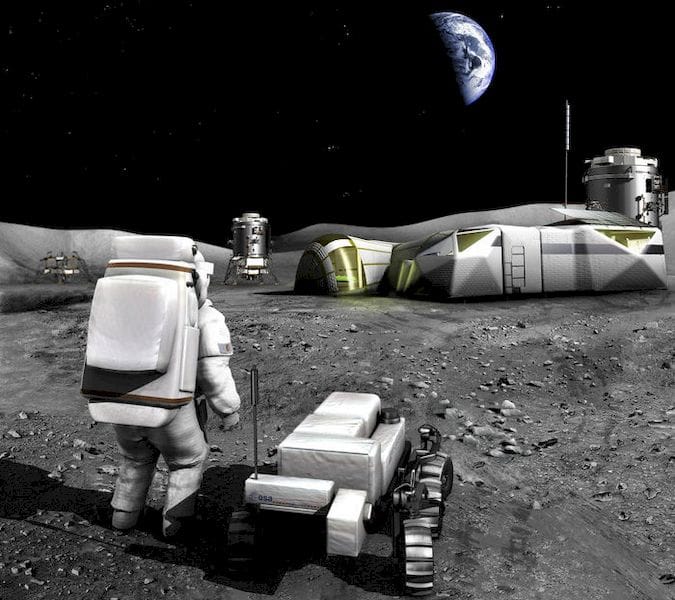
The European Space Agency seeks ideas for 3D printing on our Moon.
ESA has been investigating the idea of a habitable lunar base for some time, and 3D printing could play a key part in such a project if and when it comes to pass. The idea is that you can “live off the land” by 3D printing the ever-present lunar soil, or regolith, into desirable objects and structures.
One can easily imagine such technology being used to 3D print the walls of a habitat, and even taking a role as radiation insulator, if piled on the structure afterwards.
ESA has engaged serious researchers on these issues for years, performing experiments such as 3D printing solid blocks out of simulated regolith.
But now they’re asking for the public’s help. They say:
A new ESA-led project is investigating the ways that 3D printing could be used to create and run a habitat on the Moon. Everything from building materials to solar panels, equipment and tools to clothes, even nutrients and food ingredients can potentially be 3D printed. But if you were headed to the Moon, what would you want to 3D print, to turn a lunar base into a place that feels like home? Tell us your idea, to win a chance of actually getting it printed.
They’re now accepting submissions – which must include a writeup and sketch of a desired object – from the public until September 23, after which a team of experts will perform an evaluation and select two winners. Winners will be in either an under age 18 category or an adult category, and will receive a 3D print of their submission.
This is certainly of interest to enthusiastic supporters in the public, but given that serious scientists have been working on this problem for some time, why ask the public for help in this way?
I can think of two reasons.
First, it’s simply a public outreach mechanism to engage with people and get them more knowledgable of the challenge ahead. I think the project could achieve this using their approach.
Secondly, it could also be an ideation step. Ideation involves the collection of a large number of ideas, most of which will be bad. But there will always be several good ideas deeply buried in the pile of submissions. By asking the public for ideas, it may be that ESA is hoping to hit on a new concept they had not considered previously.
I’m wondering what those new ideas could be, and I’m sure ESA is as well.
Via ESA

